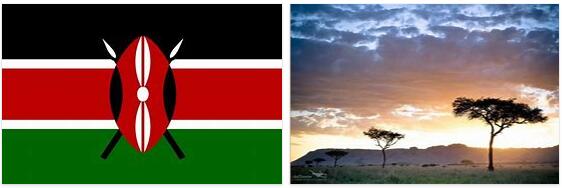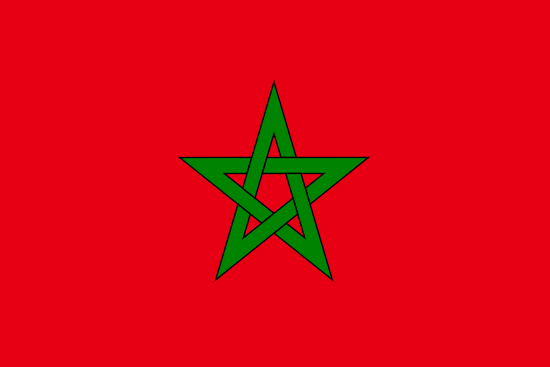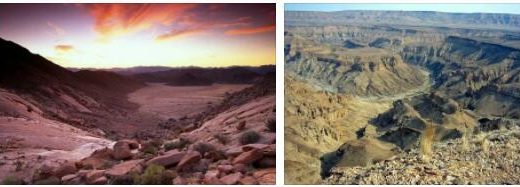Memo to a Tourist in Kenya
Travel and transport
Nairobi has two airports for domestic and regional flights, Jomo Kenyatta International Airport and Wilson Airport. Kenya has over 150 domestic airports and airstrips, and there are daily flights to the most popular destinations. In addition to regular flights, some private flights depart from Wilson Airport.
Kenya Airways, Air Kenya, Fly 540, Mombasa Air Safari and Safarilink serve the most popular safari destinations as well as many others such as Lake Victoria.
On small domestic aircraft, the baggage allowance is limited to 10-15 kg per person. You can arrange to leave excess luggage with hotels or airlines.
The main roads between major cities are generally in good condition and easy to get around in a regular sedan. Most motorways in the south are paved, but this is not always the case in the north. Cars are moving on the left side of the road. Most shallow gravel roads have deep potholes that get worse during the rainy season. Dirt roads, including those in parks and reserves, are extremely bumpy, some of them are passable only in a four-wheel drive jeep.
You can rent a car with or without a driver (Budget and Europcar are available at Jomo Kenyatta Airport). Car rental can be expensive and prices vary considerably. To drive alone, you must have an international driving license, a valid credit card, and be over 23 years of age. Motorbikes and mopeds cannot be rented, but bicycles can be rented at some beach resorts.
In Kenya, there are shared taxis – matatu (matatu) – which move from city to city, starting and ending the route at bus stations. The fare is paid to the conductor. For longer trips, private taxis can also be booked.
There are many private bus companies operating in Kenya. Most buses are old and leave only when they are full, so there are no clear schedules. There are small thefts in buses and at bus stops. However, buses are cheap and link all long-distance destinations. In urban centers, three-wheeled auto rickshaws are popular, which can accommodate up to three passengers.
New taxis (usually painted white with a yellow stripe) are reliable and metered. Older yellow taxis do not have meters, so the price should be agreed with the driver in advance. In Nairobi, there is a fleet of black taxis in the style of London cabs, where they expect a 10% tip from you. It is impossible to catch such cabs on the street, but they can be found at taxi stands.
Climate and weather
According to bridgat, Kenya lies on the equator and has a pleasant tropical climate, but there are significant regional climate variations that are influenced by several factors, including altitude. The temperature drops by about 6°C for every thousand meters you climb. Daytime temperatures in Kenya average between 20°C and 28°C, and the coast is even warmer. The coast is hot and humid all year round, but the heat is pleasant and moderated by the monsoon winds. Kenya is too close to the equator to have true winter and summer, but it does have dry and wet seasons. In general terms, the wet season is from November to May, and the dry season is from June to October.
The best period for a Kenyan safari is considered to be just the period from June to October, these are the months of the long dry season. During this period, animals concentrate near water bodies, which facilitates their search. The scarcity of the green cover of the savannah during the dry period also makes it easier to observe the fauna. In addition, somewhere from mid-July to October, the Great Migration can be observed in the Masai Mara reserve – this is the most popular time to visit when the rainy season comes to an end and vegetation is renewed in the expanses of the savannas. Herds of hundreds of thousands of ungulates are in motion, leaving the sun-scorched Serengeti and rushing to Kenya, to the Masai Mara.
From mid-October to mid-December, a period of so-called short rains begins in Kenya. During these months, many birds arrive from Europe for wintering.
December-February is a short dry season, when most animals have offspring.
February-June is the rainy season, peaking in April-May. However, at this time, prices are usually cheaper and there are much fewer tourists.
December-February is the hottest (sometimes unbearable) time, especially on the coast.
Clothing recommendations
Comfortable and light casual clothing is the best choice for a safari. It can be quite chilly in the early morning, so you’ll want to dress in several layers until the sun warms up the air. Khaki trousers with detachable legs are ideal for morning safari. Shorts, cotton shirts and T-shirts are also just what you need. For chilly nights, a sports jacket or windbreaker, as well as a warm sweater or fleece sweatshirt, will come in handy. You can bring a scarf. A hat with laces wouldn’t hurt either. Most safaris don’t have a lot of long walks or hikes, so one comfortable pair of low shoes or trainers and one pair of sandals will suffice. It is also good to have shoes with a sole that protects against thorns.
In major Kenyan cities, the dress code is conservative but not overly formal: jeans and decent tops are fine for women. Swimwear is acceptable on the beach, but in public places it is better to put on something else.
Health and vaccinations
The presence of any special vaccinations when traveling to Kenya from Russia is not necessary, but it is still recommended to get vaccinated against yellow fever. Vaccination is also required if you combine Kenya with certain other countries on the same trip. Vaccination must be done no later than 10 days before departure, it is valid for the next 10 years. After vaccination, an international certificate is issued. You can get vaccinated against yellow fever in Moscow in the following organizations: Center for Medical Prevention of the DZM (only children) – Marshal Biryuzova St., 37, 39; City polyclinic No. 5 Branch No. 2 (only adults, over 18 years old) – st. Trubnaya, 19, building 1; Infectious Clinical Hospital No. 1 (children and adults) – Volokolamsk sh., 63.
In addition, when visiting some areas, it is recommended to drink anti-malaria pills (depending on the drug, before entering the country, during the stay or upon return). However, when talking about these pills, it must be taken into account that most drugs have a negative effect on the liver, and infection itself can be avoided if you actively use repellent in the mornings and evenings and wear closed clothes. The decision is always, of course, for the client.
It is highly recommended to apply repellents and wear wide-brimmed hats and tall shoes with good ankle support. It is recommended to use sunscreen (especially in the first 2-3 days of your stay in the country and in the mountains), as well as drink more water (preferably mineral water). It is not recommended to drink tap water, it is better to buy bottled water. There will be water bottles in the safari vehicle.
All more or less large cities have pharmacies, but medicines in Kenya are mostly expensive, so it is advisable for tourists to take the necessary supply with them.



